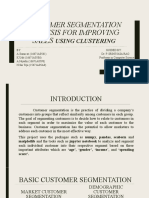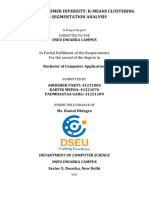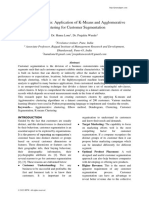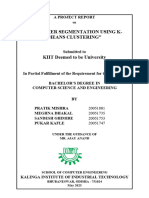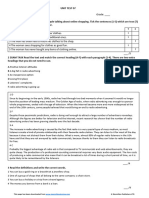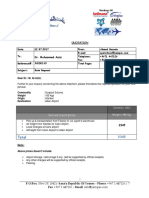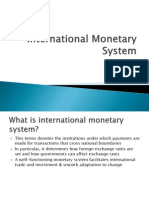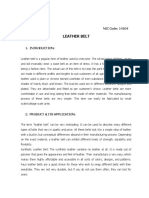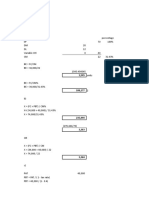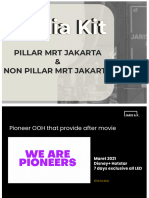0% found this document useful (0 votes)
164 views7 pagesCustomer Segmentation Using K Means Clustering
The document summarizes a project that uses K-means clustering to segment customers using basic customer data from a supermarket membership card database. The project aims to understand customer types to help the marketing team develop targeted strategies. K-means clustering will be used to group customers into distinct clusters based on attributes like customer ID, age, gender, income and spending score. Required software includes Scikit-learn, Seaborn, NumPy, Pandas, and Matplotlib.
Uploaded by
MANNAM SARANCopyright
© © All Rights Reserved
We take content rights seriously. If you suspect this is your content, claim it here.
Available Formats
Download as PPTX, PDF, TXT or read online on Scribd
0% found this document useful (0 votes)
164 views7 pagesCustomer Segmentation Using K Means Clustering
The document summarizes a project that uses K-means clustering to segment customers using basic customer data from a supermarket membership card database. The project aims to understand customer types to help the marketing team develop targeted strategies. K-means clustering will be used to group customers into distinct clusters based on attributes like customer ID, age, gender, income and spending score. Required software includes Scikit-learn, Seaborn, NumPy, Pandas, and Matplotlib.
Uploaded by
MANNAM SARANCopyright
© © All Rights Reserved
We take content rights seriously. If you suspect this is your content, claim it here.
Available Formats
Download as PPTX, PDF, TXT or read online on Scribd
/ 7










